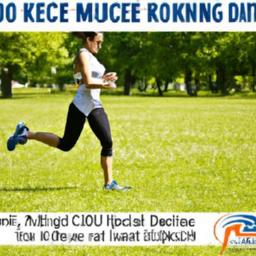Stride Smart: Tips to Prevent Knee Pain Through Posture and Stretching in Running
Running is one of the purest forms of exercise, a rhythmic dance between body and ground that unites the mind and spirit. Yet, for many runners, this joyous pursuit can quickly turn into a struggle when knee pain rears its unwelcome head.As we lace up our shoes and hit the pavement, the importance of proper posture and effective stretching becomes increasingly evident. In this article, we delve into the art of running smart-understanding the delicate mechanics of our bodies and harnessing the power of mindful movement. Whether your a seasoned marathoner or a casual jogger, we’ll explore essential tips to help you maintain optimal knee health, allowing you to enjoy every stride with confidence and ease. Join us on this journey towards pain-free running, where we equip you with the knowledge to step boldly forward.

Enhancing Your Running Form to Mitigate Knee Discomfort
To run efficiently and alleviate knee discomfort, refining your running form is crucial. Focusing on key aspects of your posture can significantly enhance your comfort during runs. Consider the following tips for a more technically sound stride:
- Maintain an upright torso: Keep your head aligned over your shoulders with a slight forward lean, avoiding excessive bending at the hips.
- Engage your core: A strong core stabilizes your hips and pelvis, providing a solid foundation for each stride.
- Foot strike technique: Aim for a midfoot strike rather than a heel strike, which can reduce the impact on your knees.
- Knee alignment: Ensure your knees are aligned with your feet during each stride to prevent any excessive stress on the joint.
- Cadence considerations: Strive for a cadence of 170-180 steps per minute to help maintain a light, quick turnover and minimize the load on your knees.
Incorporating these elements into your runs can definitely help distribute forces evenly across your legs, thus reducing the risk of knee pain. Regularly practicing these techniques will support your overall running performance while keeping discomfort at bay.

Essential Stretching Techniques for Pain-Free Running Adventures
Incorporating stretching techniques into your running routine is vital for maintaining adaptability and enhancing performance while minimizing discomfort. To ensure your body is adequately prepared for the challenges of running, consider these essential stretching techniques:
- Dynamic Stretching: engage in movements that mimic your running stride, such as leg swings and high knees, to increase blood flow and warm up your muscles.
- Static Stretching: Post-run, hold stretches that target key muscle groups affected by running, such as the hamstrings, quads, and calves, to promote elongation and relaxation.
- Foam Rolling: Utilize a foam roller on IT bands, calves, and quads to release tightness, improve circulation, and enhance mobility.
- Piriformis Stretch: Incorporate this stretch to relieve tension in the glutes, which can help with hip and knee alignment while running.
Here’s a quick reference table for incorporating these techniques into your routine:
| Stretch Type | Description | Best Time to Perform |
|---|---|---|
| Dynamic Stretching | Movements that mimic running to warm up. | Before you run |
| Static Stretching | Hold stretches for muscle relaxation. | After you run |
| Foam Rolling | Self-myofascial release to ease muscle tightness. | After you run or on rest days |
| Piriformis Stretch | Targets glutes for hip and knee alignment. | After you run |
By thoughtfully implementing these techniques, runners can pave the way for enjoyable, pain-free strides on their adventures.
Closing Remarks
As we lace up our sneakers and hit the pavement,let us carry the wisdom of posture and stretching in our stride. The road to injury prevention is not paved with shortcuts, but with mindful practices that align our bodies and nurture our muscles. By incorporating these tips into your running routine, you not onyl safeguard your knees but also deepen your connection with each exhilarating mile. Remember, it’s not just about how fast you run or how far you go; it’s about running smart. Embrace these strategies, listen to your body, and transcend the limits of discomfort. With every step you take, may you find strength, grace, and the joy of running-pain-free. So, take a moment, revisit your form, and stretch into a future where your runs are as invigorating as they are enduring. Happy running!







